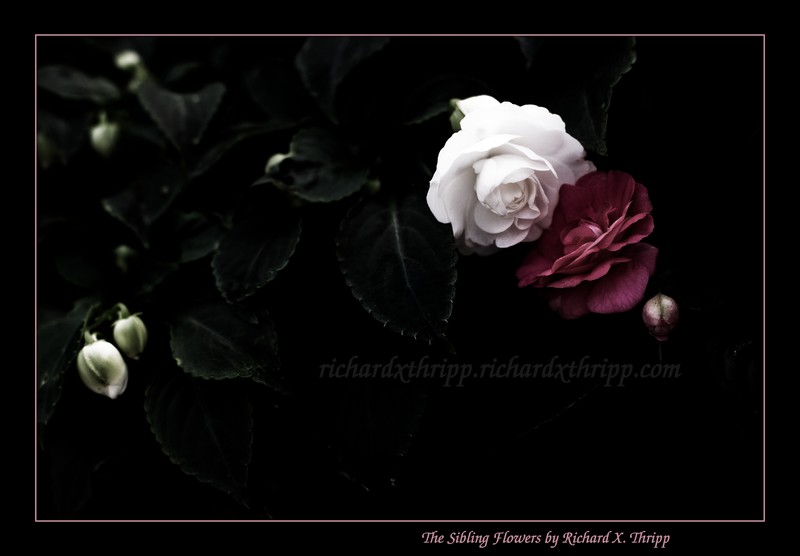This is an interesting technique that I used in my latest photo, The Explosion. Simply, you zoom the lens as you take the photo, and you get some cool motion blur, no Photoshop required.

Now, there are some concerns that you wouldn’t face with your normal photo, where the focal length stays constant through the exposure. Namely, these are:
• You can’t do it on most compacts, because the zoom is locked while taking the photo, as it’s controlled electronically. Using the method on a DSLR, where you turn the barrel yourself to zoom the lens, is usually the only option.
• You can’t do it with a prime lens (non-zooming), such as my favorite, the Canon EF 1:1.4. There’s just no zooming to be had.
• You need a slow shutter speed. It has to be fairly dark out, or in daytime, you have to close down the aperture as far as it goes, and maybe use a filter to keep more light out.
• With a slow shutter speed, you need a tripod. Camera shake does not look good, even in a zooming photo.
• Don’t try this with film, unless you want to waste a whole lot of film. Getting the process just right will take dozens of shots, and you’ll need to see what progress you’re making immediately to have any idea how to improve. This is really a place where digital shines.
To cut down the light, I screwed on a polarizing filter for the photo above, on the Canon Rebel XTi with the kit lens. It will work just fine; any 58mm circular polarizer will do for the lens. It cuts down about 1.5 stops of light (like F5.6 to F9.5), and makes the sky dark blue, depending on how you spin the ring. You can also cut down on light with a neutral density filter, though I haven’t tried one.
I opened up to F14 for The Explosion. Granted, I could’ve gone up to F22, but there wasn’t a need to. A 1/8 second exposure was plenty slow. I turned the timer on, held the camera down firmly with my left hand, and began zooming with my right just before the shutter tripped. That’s one thing you have to watch out for—it’s easy to jostle the camera while zooming, and it usually doesn’t look good because you won’t get a sharp center. So hold it down firmly.
Try over and over to get something cool-looking. Zoom slowly and just a little through exposure, quickly and over a wide range of focal lengths, zoom in steps rather than smoothly, and try different subjects. A simple subject works best. I zoomed at a moderate speed and evenly for the trees photo, and though it’s a complex subject, it draws the eye nonetheless. Try doing this on flowers, still life such as marbles or a baseball (I should’ve tried it with those), or even a highway (that’s motion blur, but zooming could’ve worked too).
Try starting zoomed out all the way, then zoom in. Then try zoomed half way to full telephoto, or wide-angle to medium. Next, go from telephoto to wide-angle (zoom out) as you expose; the world will look like it’s imploding rather than exploding.

The above is an example of stepped zooming. This was with a long exposure of 2.5 seconds; since it was dark and indoors, exposing for that long wasn’t a problem. The picture is of a door at the end of a hallway, with the light from outside flooding in from around the door. There’s a brightly lit door on the left also. Instead of zooming smoothly, I zoomed from 18mm to 55mm using the in nine steps over the period of the exposure. This gives the light a cool staggered effect. I did 30 similar shots and this was the best; it’s important for the line around the center of the door to be sharp for my purposes, meaning no motion blur. I put the camera on a milk crate and held it down myself, since I don’t own a tripod. You can improvise in the same way.
If you don’t have a zoom lens, you have a digital compact, or you just want to try something different, you can hold the camera steady while walking and get a similar effect; perhaps even better. It’s going to take a lot of tries and good luck, or a tripod on wheels or tracks to avoid other types of motion blur. I can see some cool results coming about if you try this in a hallway; maybe one at school or a hospital (and you’ll get quizzical looks from passersby).
This is a good technique to add to your arsenal, and I don’t see many people doing it. I’m sure you could work something similar in Photoshop, but getting it straight from the camera is much more fun.





